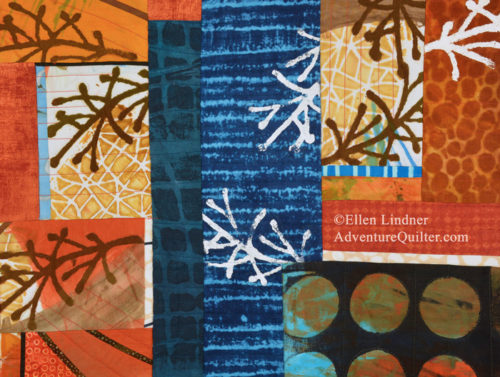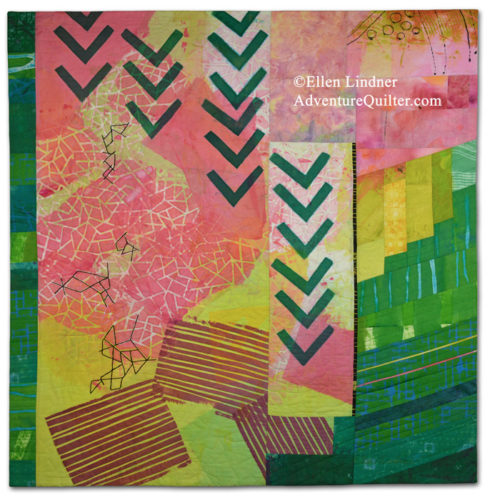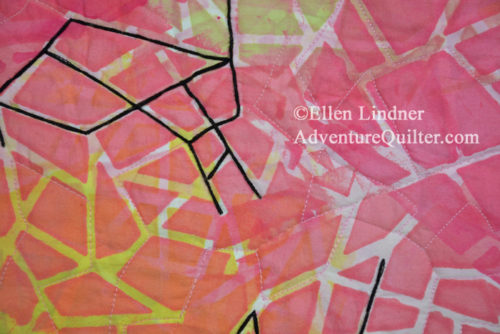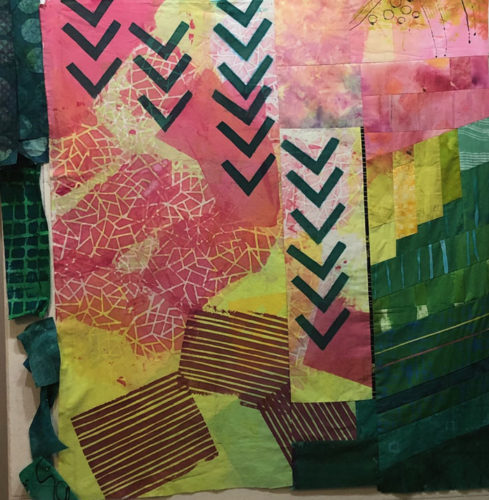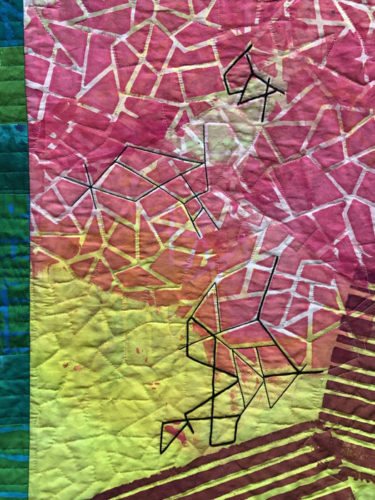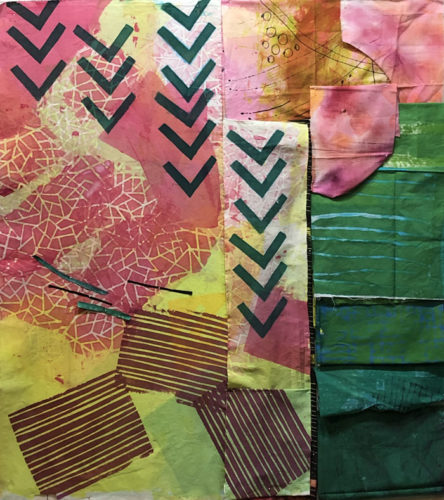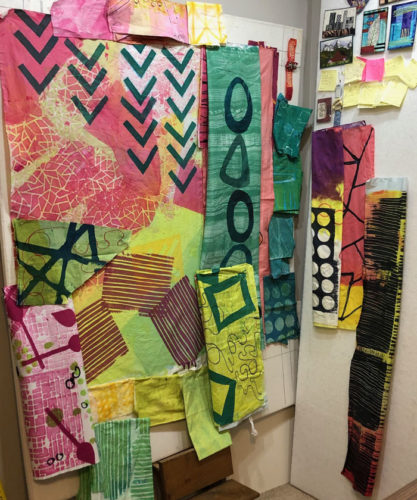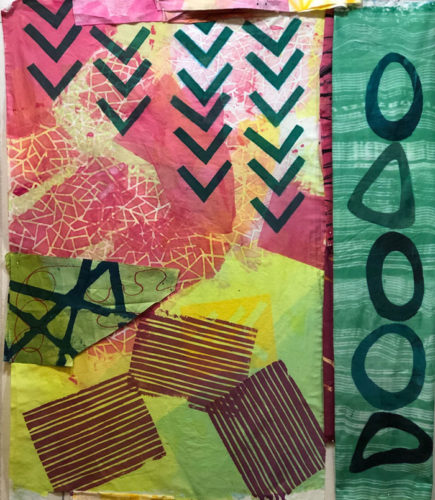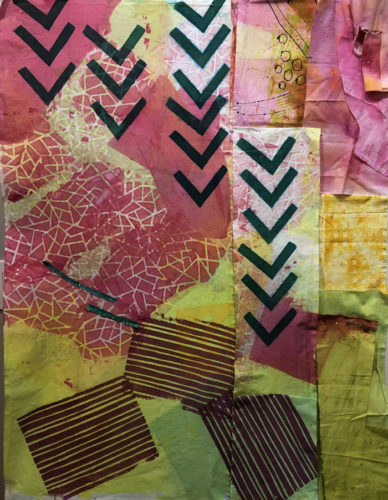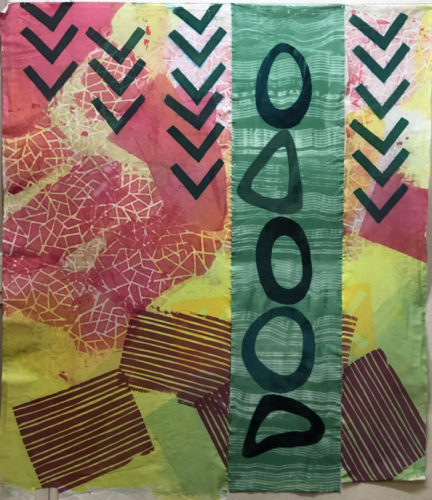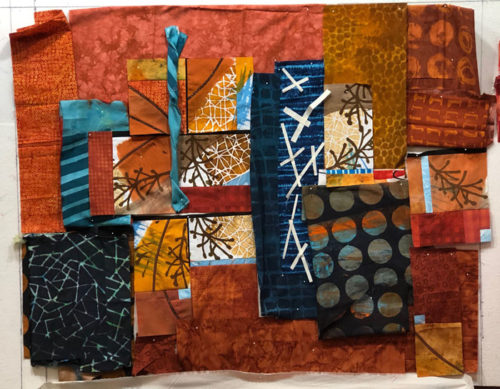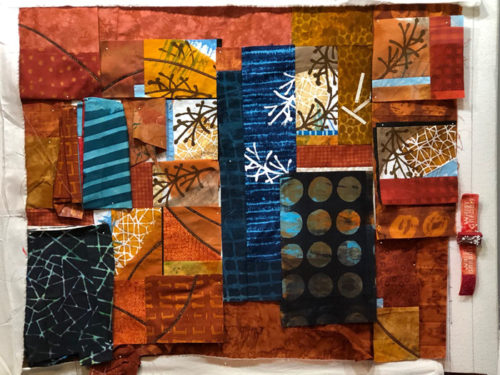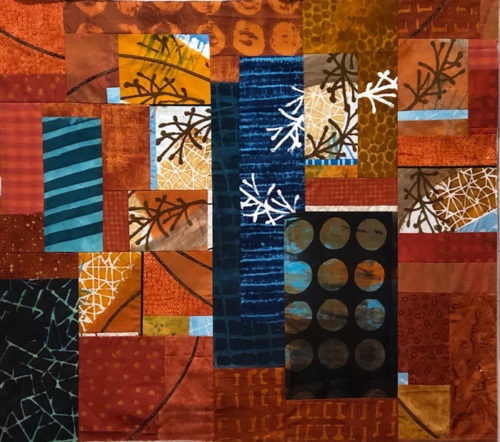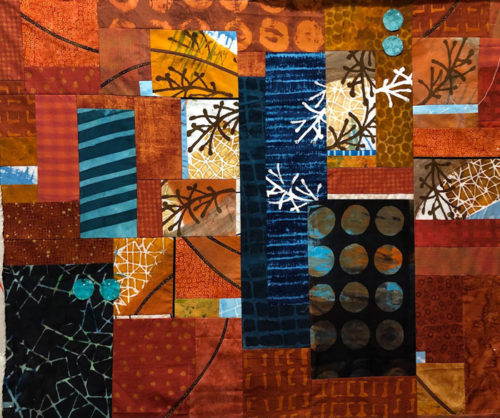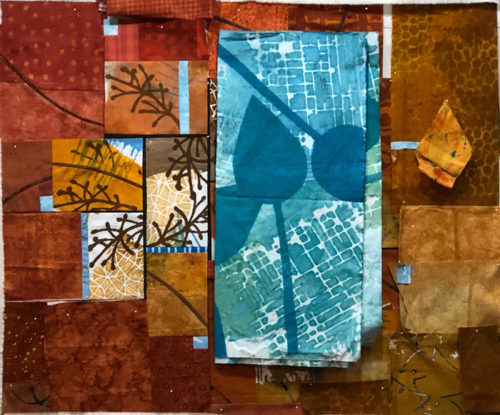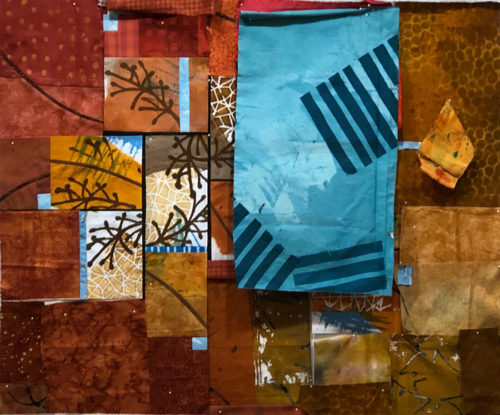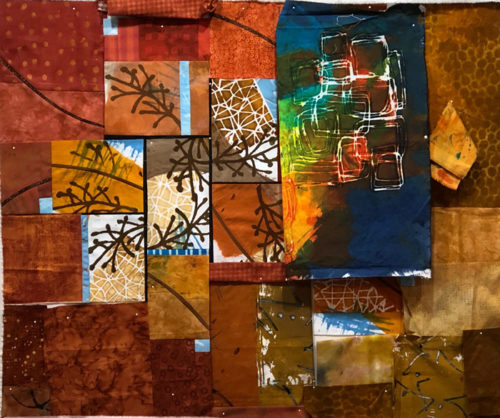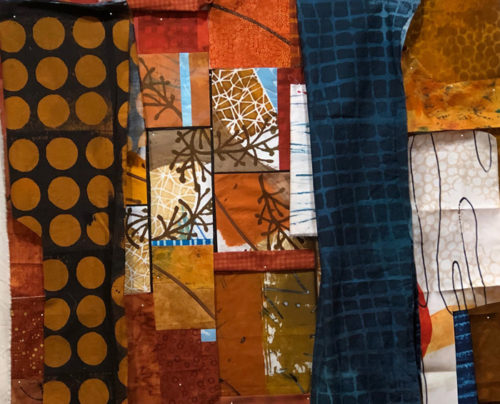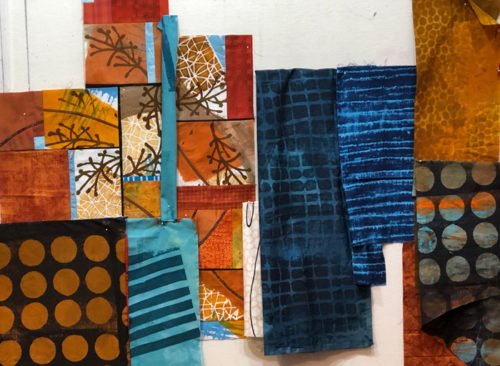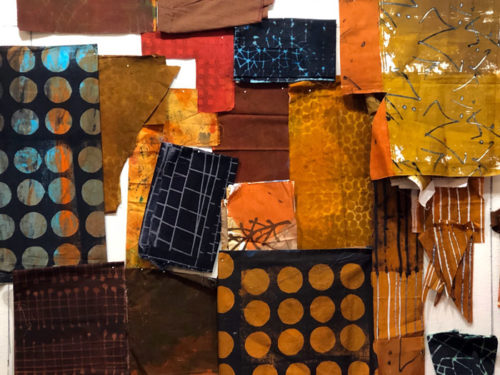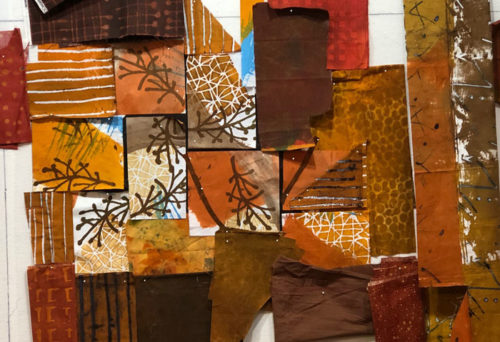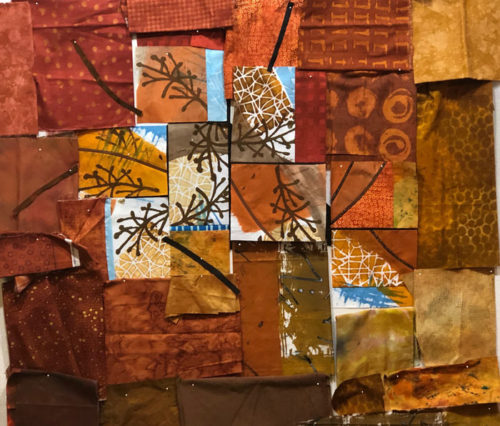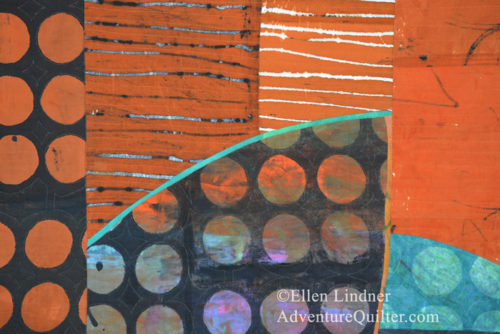As I started a new quilt, I looked to my hand dyed fabrics for inspiration. I pulled out a few that I thought might spark some interest.
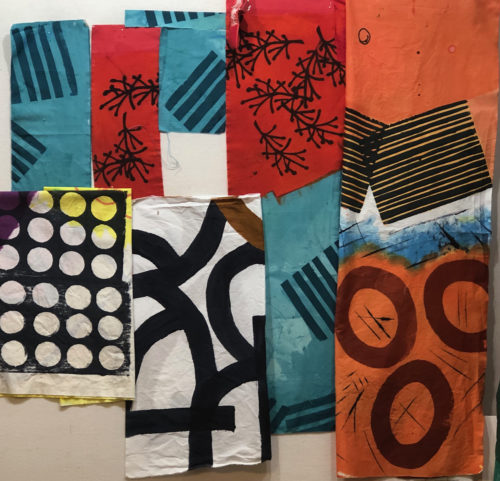
Uh, no. It all seemed pretty ugly. But, I was intrigued by the large scale black and white piece. Could I work with something like that? It was certainly worth a try.
However, I only had a little of this, so I knew the finished quilt would be small. In fact, this high contrast fabric would comprise the bulk of the piece.
What to put with it? Maybe some red?

But, it needed some additional pattern. On a much smaller scale this time, so as not to compete with the main piece. How ’bout these?

I liked them in the audition (not-yet-pieced) version, but after moving on to piecing I realized that the proportions had changed quite a bit. (Why didn’t I think more about that?) That wide teal line was way too wide. I trimmed it and repieced it. Much better, (below.)
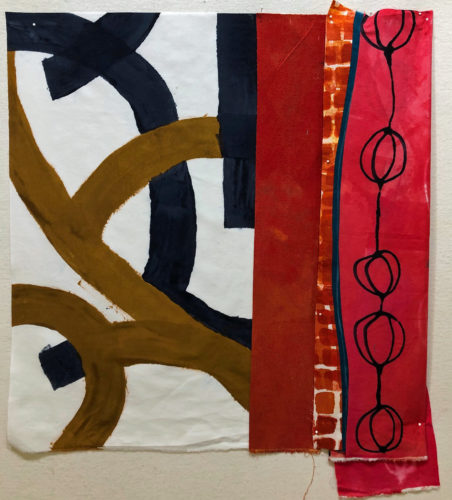
But, that ate into the orange-red print, so I added some more. (This required some fiddly piecing, since I only had scraps of this remaining.) Then, I realized that the solid red was too wide. (Every change affects everything.) I put a tuck in that fabric, (shown pinned for audition below.) That did the trick.

Finally, my little composition was ready for quilting.

I echoed the pattern in the far right fabric and liked the effect.
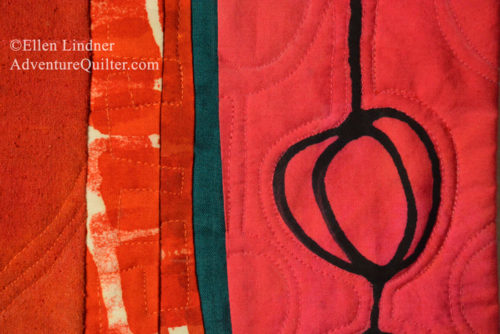
I’ve named this piece Good Possibilities. You can see the full image here.
I really enjoyed working with this larger scale fabric. I’ll definitely do it again.
Ellen Lindner


